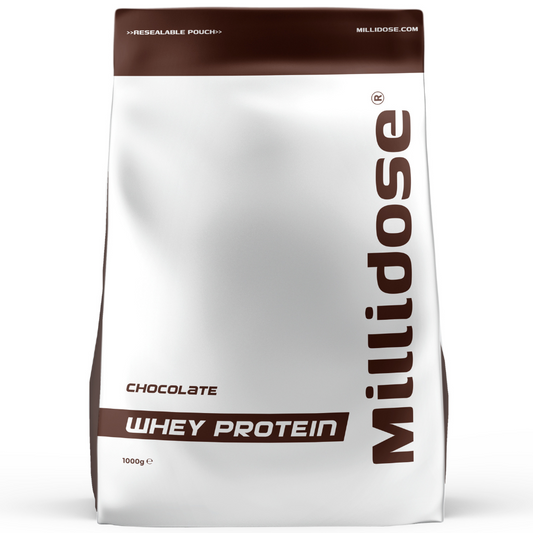Whey Protein Guide: Types & Muscle-Building Benefits

Share
The Ultimate Guide to Whey Protein Types and How to Use Them for Muscle Gain
When it comes to boosting your muscle game, whey protein is a powerhouse you don't wanna ignore! 🏋️♂️ Whether you're a seasoned athlete or just starting your fitness journey, understanding the different whey protein types can be a game-changer. From isolating those muscles to fast-tracking recovery, the benefits of whey protein are endless. In this ultimate guide, we'll dive into what makes whey protein stand out among other protein supplements, explore the best whey protein powder options available, and show you exactly how to use whey protein for muscle gain. Get ready to flex those muscles and make the most of your protein-packed journey! 💪
Types of Whey Protein
Concentrate vs. Isolate
Whey protein comes in various forms, but Concentrate and Isolate are the most popular choices among fitness enthusiasts. Whey Protein Concentrate (WPC) boasts about 70-80% protein content and retains more nutrients found in whey. It's packed with essential amino acids that can aid muscle recovery and growth. Plus, it contains some carbohydrates and fats, which might help with energy replenishment.

On the other hand, Whey Protein Isolate (WPI) goes through additional processing to eliminate most of the carbs and fats, resulting in a protein content of over 90%. This makes it a great option for those looking to increase protein intake without added calories. Isolate is also low in lactose and can be suitable for those with lactose sensitivities.

Understanding the differences between these types can help you choose the best whey protein powder for your muscle gain goals.
Hydrolysate: The Fastest Absorbing
Whey Protein Hydrolysate (WPH) is known for its rapid absorption, making it a favorite among athletes who need a quick protein boost after intense workouts. This type of whey protein has undergone additional processing to break down the protein into smaller peptides, which speeds up digestion and absorption.

Hydrolysate is often used in medical protein supplements and infant formulas due to its improved digestibility and reduced allergen potential. This makes it an excellent choice for those with sensitive stomachs or those who experience discomfort with other protein types.
However, because of its extensive processing, WPH can be more expensive than Concentrate or Isolate. For those who prioritize quick recovery and muscle synthesis, the benefits of whey protein hydrolysate may justify the higher cost.

Choosing the right whey protein type will depend on your specific fitness and dietary needs.
Blended Whey Protein Options
Blended whey protein options combine different types of whey protein, such as Concentrate, Isolate, and Hydrolysate, to offer a balanced profile of benefits. These blends aim to provide the best of each type, giving you the fast absorption of Hydrolysate, the nutrient retention of Concentrate, and the high protein content of Isolate.

These blends are designed for versatility, making them suitable for various fitness goals, whether it's muscle gain, recovery, or weight management. They are often more affordable than pure Isolate or Hydrolysate options, offering a cost-effective way to benefit from high-quality protein.
Blended whey protein powders can be a convenient choice for those who want a comprehensive supplement without the need to buy multiple products. They provide a steady release of amino acids, supporting muscle synthesis and recovery throughout the day. For an all-around protein solution, blended whey protein could be the answer.




